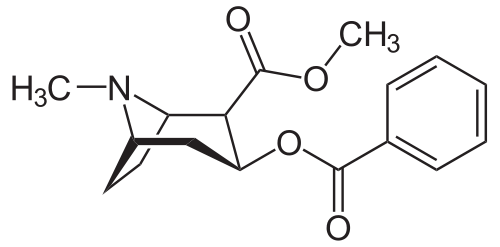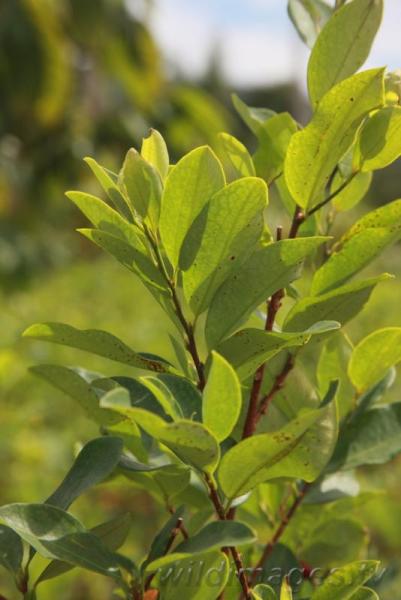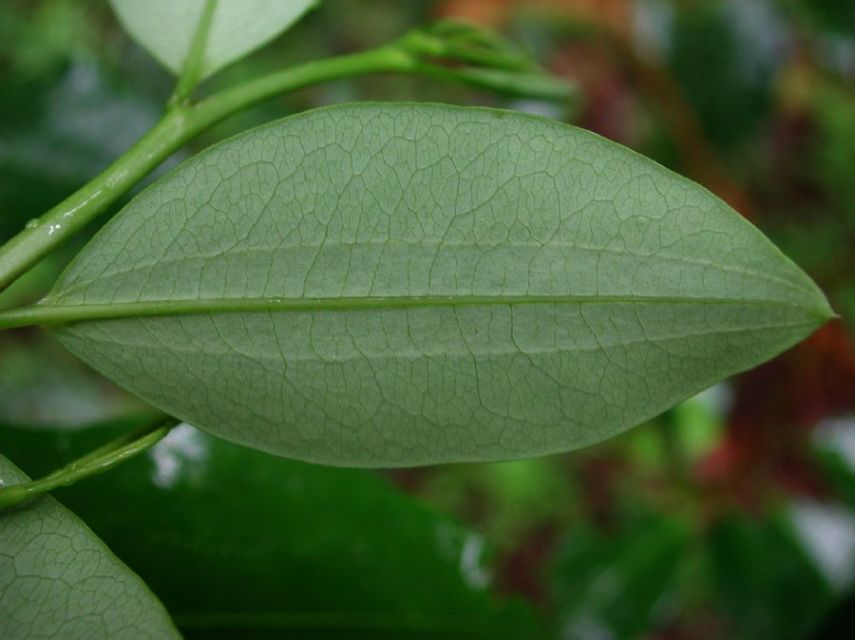Adaptations of Erythroxylum coca
Cocaine as an insecticide
One of Erythroxylum coca's adaptations was the evolution of cocaine
in the leaves of the plant. Cocaine (C17H21NO4) is only one of the alkaloids synthesized
within the plant. Some of the other alkaloids include benzoylec gonine,
cuscohygrine, dihydrocuscohygrine, ecgonine, hydroxytropacocaine, hygrine,
methrylecgonine cinnamate, tropacocaine, truxilline. While it is known that
cocaine inhibits dopamine reuptake in mammals, it's natural function in the
plant is still unknown. Recent studies show that cocaine in the leaves has
been evolutionary selected to act as a sort of pesticide. In insects,
cocaine acts as an inhibitor of the re-uptake of octopamine, an
insect-specific neurotransmitter. Octopamine plays a similar role in insects
as dopamine does in mammals, so insects that feed upon specific parts of
plants from the Erythroxylum genus are likely to "overdose" on the
octopamine in their nervous systems.
gonine,
cuscohygrine, dihydrocuscohygrine, ecgonine, hydroxytropacocaine, hygrine,
methrylecgonine cinnamate, tropacocaine, truxilline. While it is known that
cocaine inhibits dopamine reuptake in mammals, it's natural function in the
plant is still unknown. Recent studies show that cocaine in the leaves has
been evolutionary selected to act as a sort of pesticide. In insects,
cocaine acts as an inhibitor of the re-uptake of octopamine, an
insect-specific neurotransmitter. Octopamine plays a similar role in insects
as dopamine does in mammals, so insects that feed upon specific parts of
plants from the Erythroxylum genus are likely to "overdose" on the
octopamine in their nervous systems.
Nicotiana tabacum and Papaver somniferum are also plants that are cultivated for their naturally occurring alkaloids.
Leaves
Another interesting adaptations of the coca plant, that sets it apart from
other plants, is the evolution of its above-ground organ, the leaf. While the leaves
do not resemble each other
 throughout the wide variety of coca, they are
still distinguishable from other plants by having a slightly curved line on
each side of the midrib. The lines run from the base to the apex and have
the appearance of a rib, but in reality are a result of peculiar folding of
the leaf while still in the bud. This "false" midrib is even more visible on
the under face of the leaf, where it is darker in color due to the closer
cellular structure.
throughout the wide variety of coca, they are
still distinguishable from other plants by having a slightly curved line on
each side of the midrib. The lines run from the base to the apex and have
the appearance of a rib, but in reality are a result of peculiar folding of
the leaf while still in the bud. This "false" midrib is even more visible on
the under face of the leaf, where it is darker in color due to the closer
cellular structure.
The three most popular commercial varieties of coca leaves are "Huanuco
coca" or Bolivian, "Truxillo coca" or Peruvian and "Java Leaf"
which is
found in Indonesia.
The leaves of Huanuco coca (E. coca) range in color from clear
brown to greenish brown wish a yellowish underside, smooth and slightly
glossy, and having little or no petiole. The blades are four to eight
centimeters in length and two to four centimeters in breadth, with a nearly
elliptical shape. Veins and veinlets of the leaf are distinctly prominent,
along with the line of collenchyma tissue that runs along either side of the
reddish-brown midrib.
The leaves of Truxillo coca (E. truxillense) are pale green,
brittle, thin, smooth but are without shine, shortly and stoutly petioled.
The veinlets are much less marked and the two curved lines are much less
distinct than that of Bolivian leaves. The midrib itself is green in color.
Java leaves are similar to the physical characteristics of it's South
American cousins but only produce the intermediate precursors to cocaine and
not cocaine itself.
Flowers
One of the key characteristic features of the angiosperms, also known as
flowering plants, is the flower. The flowers of the coca plant grow alone or
in small groups on the junction of the branch and the leaf. They are usually
off-white to ivory in color and are noted to emit a pleasant odor of
almonds. The flowers themselves are considered to be perfect flowers, i.e.
they contain both the male and the female reproductive organs grow on the
same flower. The sepals, which are located immediately beneath the petals,
occur in groups of five, along with the petals themselves which always occur
in fives. The single female ovary in the plant is surrounded by ten male
stamens, which have the sole function of ensuring fertilization and
perpetuation of the species.
Catharanthus roseus is another angiosperm which contains petals
that occur in fives.
Continue to Nutrition
Return to Habitat
Return Home
